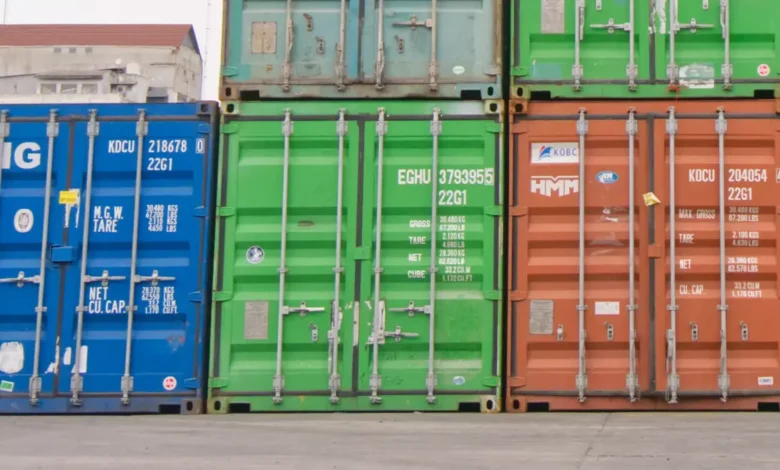The Importance of Tare Weight in Food Packaging and Labeling

When you pick up a package of your favorite snack or ingredient, have you ever wondered what that little number on the label means? That’s tare w eight—a crucial term in food packaging and labeling that often flies under the radar. Understanding tare w eight is essential for both consumers and manufacturers. It plays a significant role in ensuring fairness at checkout counters and maintaining safety standards in food production. So, let’s dive into why tare weight matters more than you might think!
What is Tare Weight?
Tare weight refers to the weight of a container or packaging without any contents. It serves as a baseline against which the actual product’s weight is measured.
To put it simply, when you purchase food items, you’re often paying for more than just the product itself. The tare weight includes everything from jars and boxes to plastic wraps and bags.
For instance, if you buy a jar of honey that weighs 500 grams in total but has a tare weight of 200 grams, the actual net weight of honey alone is only 300 grams. This distinction is important for both consumers and retailers.
Understanding tare weight allows for accurate pricing and portion control. It ensures that customers know exactly what they’re getting—and not overpaying—for excess packaging materials.
Why is Tare Weight Important in Food Packaging and Labeling?
Tare weight plays a crucial role in food packaging and labeling. It represents the weight of the container or packaging itself, ensuring that consumers pay only for what they actually consume.
Without accurate tare wei ghts, customers could end up overpaying. This not only affects individual budgets but also contributes to broader issues of trust between consumers and brands.
Moreover, precise tare measurements help manufacturers maintain consistency across products. Consistency is key in building brand loyalty and ensuring customer satisfaction.
When labels accurately reflect net contents minus tare weight, transparency increases. Shoppers appreciate knowing exactly what they’re purchasing without hidden costs tied to excessive packaging.
Understanding tare weight fosters a more informed consumer base. As shoppers become increasingly conscious about their purchases, businesses prioritizing accurate tare measurement can gain a competitive edge in the market.
How Tare Weight Impacts Accuracy and Fairness in Pricing
Tare weight significantly influences the accuracy of pricing in food packaging. When consumers purchase products, they expect to pay for the actual content rather than the container or packaging. An accurate tare weig ht ensures that only the net product is counted.
Incorrect tare weig hts can lead to inflated prices, frustrating customers who feel cheated. Trust plays a crucial role here; when businesses are transparent about their measurements, customer loyalty tends to grow.
Moreover, manufacturers benefit from precision in tare weights as it helps maintain consistency across batches. This consistency not only supports fair pricing but also contributes to brand integrity and reputation.
In competitive markets, even slight discrepancies in tare we ight can have financial implications for both retailers and consumers alike. Ensuring precise calculations fosters a culture of fairness, making it essential for anyone involved in food distribution or retailing.
The Role of Tare Weight in Food Safety
Tare weight plays a crucial role in ensuring food safety. By accurately accounting for the weight of packaging, it helps prevent contamination and spoilage.
When tare weight is miscalculated, there’s a risk of consumers receiving products that are not only underfilled but also potentially unsafe. For instance, improper measurements can lead to incorrect storage conditions or inappropriate handling practices.
Additionally, accurate tare weights assist manufacturers in complying with safety regulations. They facilitate better inventory management by enabling businesses to track expiration dates more effectively.
By weighing products without their containers, companies can ensure freshness and quality throughout the supply chain. This attention to detail ultimately protects consumers from health risks associated with expired or compromised food items.
The integrity of labeling also hinges on precise tare weights. When labels display correct information about contents and servings, customers make informed choices about what they consume.
Regulations and Requirements for Tare Weight in Food Packaging
Tare weight regulations play a crucial role in the food packaging industry. These standards ensure that consumers receive accurate information about the products they purchase. Governments and regulatory bodies set specific guidelines to define how tare weights should be measured and displayed.
In many regions, food labels must clearly indicate both net weight and tare weig ht. This transparency helps prevent consumer deception. It allows shoppers to make informed choices based on actual product content rather than misleading packaging claims.
Additionally, compliance with tare weight regulations is often enforced through regular inspections of manufacturing facilities. Companies found violating these laws can face fines or other penalties, underscoring the importance of adherence to established guidelines.
Understanding these requirements is essential for businesses in maintaining trust with their customers while promoting fair competition within the market. Accurate tare weight measurement isn’t just a legal obligation; it’s fundamental for ethical business practices.
Tips for Accurate Tare Weight Measurements
To achieve accurate tare weig ht measurements, start with a clean scale. Residue from previous items can throw off your readings.
Next, always use the same container for consistency. This helps maintain uniformity in your measurements over time.
When weighing, make sure to zero out or calibrate the scale before adding the container. This step is crucial for getting an accurate tare weight.
For bulk items, consider using a standard measuring tool like a scoop or cup. It simplifies the process and reduces error margins.
Keep an eye on environmental factors too. Fluctuations in temperature and humidity can affect both food packaging materials and scales, leading to inaccurate weights.
Regularly check your equipment’s calibration against known weights. A simple practice that ensures ongoing precision in all your measurements.
Conclusion
Tare weight is an essential aspect of food packaging and labeling that often goes unnoticed. Understanding it can lead to fairer pricing, better accuracy, and enhanced food safety for consumers.
As we’ve explored, knowing the tare weight helps ensure that customers are not overpaying for products due to misleading packaging. It protects both buyers and sellers from potential disputes related to quantity.
Moreover, adhering to regulations surrounding tare we ight fosters a transparent relationship between manufacturers and their clientele. This transparency builds trust in brands and promotes customer loyalty.
Taking the time to measure tare weight accurately should be a priority for anyone involved in food production or retail. Implementing best practices not only benefits business operations but also ensures compliance with industry standards.
In essence, recognizing the significance of tare we ight within the context of food packaging creates a more informed consumer base while supporting ethical selling practices across the board. By prioritizing accurate measurements, everyone stands to gain—whether they’re purchasing groceries or managing product inventory.





